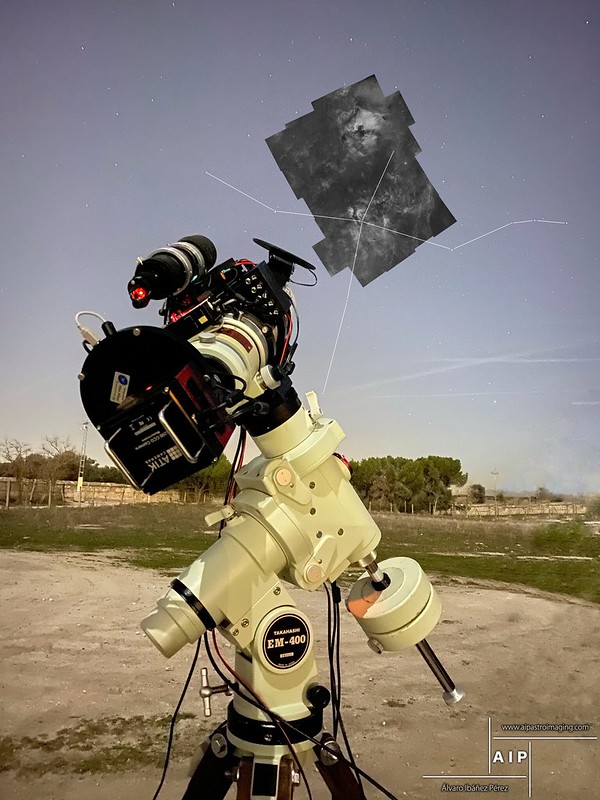Simeis 147, also known as the Spaghetti Nebula, or Sharpless 2-240, is a supernova remnant (SNR) in the Milky Way, straddling the border between the constellations Auriga and Taurus. Discovered in 1952 at the Crimean Astrophysical Observatory by Grigory Shajn and his team using a Schmidt camera and a narrowband filter that was close to the Hydrogen Alpha transmission line. It is difficult to observe due to its extremely low brightness.
I captured it in 2 panel mosaic through my GT81 Telescope . It was so faint …so faint..that firstly i was not capable of locating it even, trying it with a manual mount and Redcat 51. So GOTO mount was the only solution .Then I tried the mosaic to capture it. I firstly thought of using Redcat 51 ..but then a planning of mosaic was in my thought and GT 81 came into play. Framing that SNR into the screen was a challange. As far the cloudy nights were in concern, many sessions gone in vain. At last I succeeded to capture it. Actually it was my third attempt to capture that from 2019 and finally after 2 years I was able to get it. The other two were using my ES ED 127 MM APO and REDCAT 51. Learning from the failures before, i was able to image the most difficult target I have ever faced. Also the editing was very very difficult as it was done in different conditions and different day. A memorable experience in my life. I will surely try it again with A Mono Camera , if i buy that in future for more detailing.
Equipments Used :
William Optics GT 81 IV
QHY 294C Pro ( -25 degree Celcius , gain 1610 )
William Optics Uniguide 50 MM Guidescope
ZWO ASI 290 MM Guidecam
Optolong L Enhance Filter
40 Darks 40 Flats for each session
Bortle 4 Zone
Sessions ( 1 to 5 ) :
50 x 240 “ for each session
Integration Time For Each Session : 3 hrs 20 minutes
Total Integration time : 16 hrs 40 minutes
Softwares Used :
Affinity Astrophotography Suite for stacking and editing in each Session
Image Composite Editor and Photoshop for Stitching
Photoshop, Topaz Denoise AI for final editing.





















